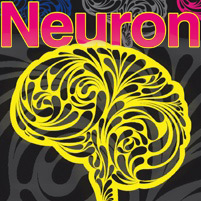Autism Connections


Marlene Behrmann
New research led by Carnegie Mellon University neuroscientists takes the first step toward deciphering the connection between general brain function and the emergent behavioral patterns in autism.
Published in the journal Neuron, the study shows that autistic adults have unreliable neural sensory responses to visual, auditory and somatosensory, or touch, stimuli. This poor response reliability appears to be a fundamental neural characteristic of autism.
"Within the autism research community, most researchers are looking for the location in the brain where autism happens," said Ilan Dinstein, a postdoctoral researcher in CMU's Department of Psychology and lead author of the study.
"We're taking a different approach and thinking about how a general characteristic of the brain could be different in autism — and how that might lead to behavioral changes."
For the study, 14 adults with autism and 14 without — all between the ages of 19 and 39 — completed sensory experiments while inside a functional magnetic resonance imaging (fMRI) machine located at CMU's Scientific Imaging and Brain Research Center.
To test the visual system's neural response, participants were shown a pattern of moving dots. The auditory stimulation consisted of pure tones presented to both ears, and short air puffs were used to stimulate the somatosensory senses.
The fMRI measured each individual's brain activity during the experiments.
For those with autism, in all of their primary cortices — visual, auditory and somatosensory — the within-individual response reliability was significantly lower, by 30-40 percent. There was not a typical, predictable response from trial to trial.
Thus, in the individuals with autism, there was significant intra-individual variability, with responses varying from strong to weak. Non-autistic adults had replicable and consistent responses from trial to trial.
"This suggests that there is something very fundamental that is altered in the cortical responses in individual's with autism," said Marlene Behrmann, professor of psychology at CMU, director of CMU's Cognitive Neuroscience Lab and a leading expert on using brain imaging to understand autism.
"It also begins to build a bridge between the kind of genetic changes that might have given rise to autism in the first place — and the kind of changes in the brain that are responsible for autistic behavioral patterns."
The study also presents the first time that researchers have investigated multiple sensory systems — at a primary brain function level — within the same autistic individual.
"One of the problems with autism is that there is considerable variability in symptoms across individuals," Dinstein said. "In this case, we have a tremendous amount of data on each individual and each of their three sensory systems. And, we see the same unreliability across all of them in autism relative to the controls."
While this study focused on adults, the team plans on taking the research further to study how the details of sensory unreliability play out in younger autistic groups.
Related Links: Read full release | Leading Autism Research | Brain, Mind & Learning | Dietrich College
